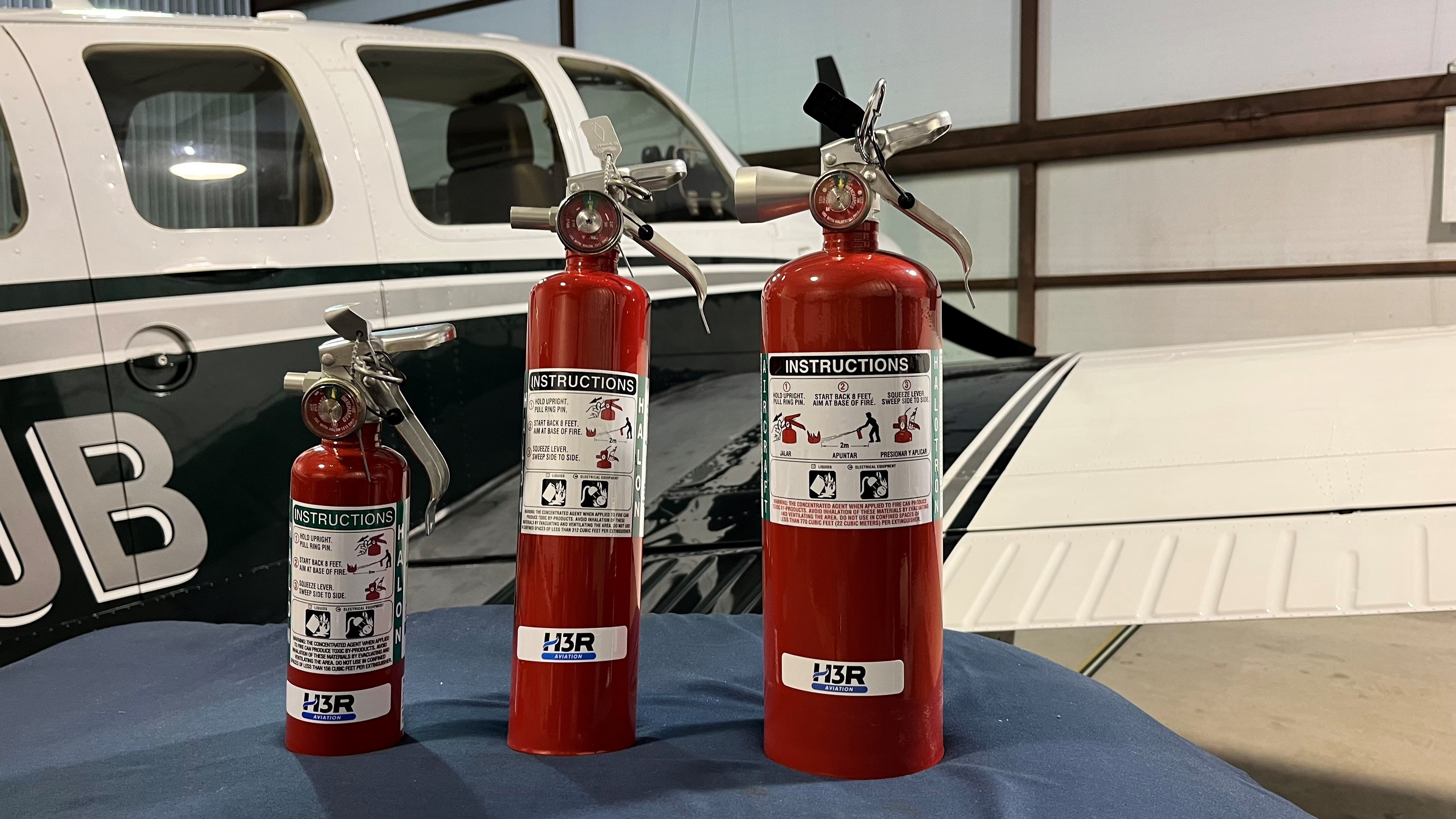Aircraft Maintenance: Choose your fire extinguisher carefully
While a mechanic was working on an airplane in the hangar, a spark ignited some raw fuel below the engine and started a fire. The mechanic reacted quickly, using a multipurpose dry chemical fire extinguisher. The fire was quickly put out, but the aircraft and several other aircraft nearby were severely damaged. It wasn’t the fire that caused the damage—it was the extinguisher.
While any fire extinguisher is better than no fire extinguisher, there is a reason that certain fire extinguishers are specifically approved for use in or around aircraft. Not surprisingly, the low-cost extinguishers that you will find at your local hardware store can wreak havoc in both the hangar and the cockpit.
If this much damage can occur in a hangar or on an airport ramp, you can imagine what will happen if one of these extinguishers is used inside an aircraft. The pilot and passengers will be temporarily blinded by the dry agent and, even if they land safely, the aircraft will likely be beyond reasonable repair.
The solution is to use aviation-approved fire extinguishers. The two most common types of aviation extinguishers are carbon dioxide and halon (specifically Halon 1211) extinguishers. Carbon dioxide extinguishers are suitable for airport and hangar use, but never in small spaces or in any cockpit. Carbon dioxide is poisonous at a concentration of only 4 percent and lethal at just 8 percent.

Halon, on the other hand, is known as a “clean agent” that comes out of the bottle as an electrically nonconductive liquid that can be directed at a fire source. However, as opposed to water or dry chemicals, halon quickly turns to a gaseous fire extinguishant that leaves no residue after it evaporates. It literally “breaks the chain” of the fire reaction and quickly stops fires of almost any type. It is also fairly nontoxic and heavier than air, so it will tend to settle below breathing height in most situations.
That said, halon is not perfect. As it attacks the fire, it emits a sharp, acrid odor. It is also very expensive, mainly because the chemical compound is extremely damaging to the ozone layer and its production has been banned since 1994. So, where does all the “new” halon come from? It comes from one source: recycling. Companies such as H3R Aviation recycle Halon into new products available in a variety of sizes suitable for hangars and aircraft.
For my personal use, I have a 1.25-pound H3R halon extinguisher mounted behind the co-pilot seat in the Bonanza. It’s within easy reach of the pilot or the rear seat passengers. At just over two pounds and only 10 inches tall, it doesn’t take up much space or weight, yet it has a range of 12 feet and can discharge for 10 seconds before it’s empty. That’s a lot of punch for most GA aircraft. As a side note for fire safety, I also keep a pair of swimming goggles in the glove box to protect my vision in case of an in-flight fire (thanks to my friend Brian Schiff for that suggestion).
Outside the aircraft, I have a larger 2.5-pound halon extinguisher (also from H3R Aviation) mounted to my tug, which keeps it near the engine and fuel at all times on the ground, as well as a 5.5-pound Halotron extinguisher for the hangar. Halotron is a similar agent to halon that is still legal for production, but not as effective as halon.
Selecting the proper fire extinguisher can protect both your life and your aircraft investment. It also pays to educate those around you. Look around the shop the next time you drop off your aircraft and make sure there aren’t any dry chemical ABC fire extinguishers around, just waiting to ruin your “innocent” aircraft. If you’d like to learn more, FAA Advisory Circular AC 20-42D, Hand fire extinguishers for use in aircraft, is a helpful source of information. Until next time, I hope you and your families remain safe and healthy, and I wish you blue skies.




